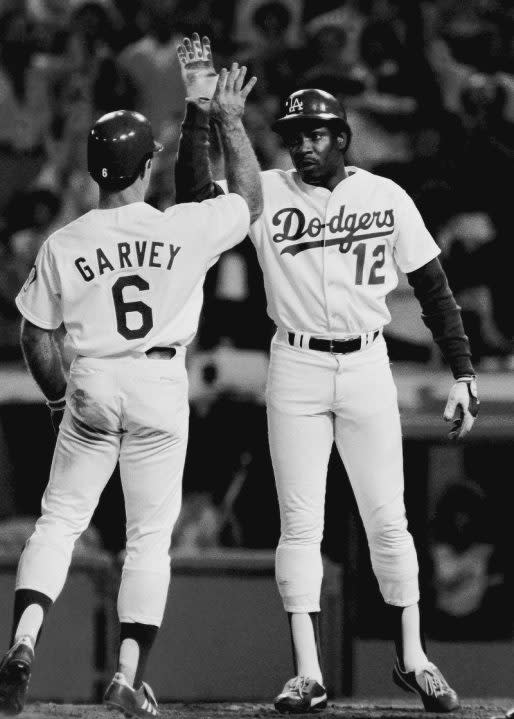The high five isn’t as old as you think: Do you know who invented it?

(NEXSTAR) – It’s very likely that humans had figured out how to slap their raised palms together thousands of years ago, but it didn’t really become a thing until 1977.
Glenn Burke, a former outfielder for the Los Angeles Dodgers, is credited with “inventing” the high five during a game against the Houston Astros on Oct. 2, 1977, when he ran toward home plate and raised his hand to greet a teammate who had just rounded the bases after a home run.
“His hand was up in the air, and he was arching way back,” Burke’s teammate Dusty Baker once told ESPN. “So I reached up and hit his hand. It seemed like the thing to do.”
It’s unclear where Burke got the idea for the gesture, or whether he expected Baker to instinctively raise his own hand for a slap. A similar gesture had been depicted in the 1966 film “Breathless” by Jean-Luc Godard, but it’s likely the Burke and some former teammates developed their own five-like greetings in the minor leagues, biographer Andrew Maraniss said. (The slang term “slap five” had also been around for decades to describe the act of slapping hands, though not necessarily overhead, according to a 1948 publication called “The Dictionary of Contemporary Slang.”)
“It sort of came from this hand jive thing that they were doing in the East Bay when Glenn was growing up,” Maraniss once said in an interview with baseball journal The Twin Bill.
When Burke hit a home run later the same inning, he and Baker slapped hands again in the dugout, laying the foundation for what would soon become a team tradition, Maraniss said.
YouTube star Ms. Rachel calls out Mayor Adams’ cuts to early education
In coming seasons, the Dodgers would embrace the unique salute, even going so far as to print promotional materials explaining the proper etiquette for the “high five.”
“The ‘High Five’ salute has become the Dodgers’ standard salute during the 1980 season,” reads a 1980 promotional poster reprinted in a book by baseball historian Mark Langill. “It is given customarily following a home run, good defensive play or Dodger victory.”
Burke, however, wasn’t around to participate in most of those high fives. As recounted in a 2014 edition of ESPN’s “30 For 30,” Burke was traded in 1978 to the Oakland A’s — a decision which confused and upset some of his teammates, according to Baker.
“We knew … the reason he was traded was because he was gay,” Baker told ESPN.
Burke’s sexuality wasn’t exactly a secret (“everybody knew,” Baker claimed), though it became more widely known by the time he was playing with the A’s, according to the sports documentary series.
He ultimately left the team due to tensions with A’s manager Billy Martin, but couldn’t secure another spot in the MLB with other organizations, who were reportedly reluctant to bring on a gay player.
“It was a death sentence in major league baseball back then,” Erik Sherman, who co-wrote an autobiography with Burke, said in a 2015 interview with the Cooperstown Crier.
Burke officially came out in 1982, in an article published with Inside Sports. He explained that he had continued to play in softball leagues around San Francisco, and hoped to start coaching high school basketball. That year, he also appeared on “Today,” where Bryant Gumbel asked if he believed a coaching career was possible “with people knowing what they do now.”
“Anything is possible,” Burke said.
CASH4LIFE ticket worth $1,000 a day for life sold on Long Island
In the years after coming out, Burke had worked to represent the gay community and gay athletes, which he hoped might “make it easier for other young gays to go into sports,” he told Inside Sports. He was also known to sit on the hood of a car outside a gay bar in San Francisco’s Castro District, handing out high fives to passersby.
Sadly, Burke had also developed a drug habit in the ’80s, ESPN reported, and his health declined after a car accident in 1987. In 1993, he was diagnosed with HIV, and he died in 1995 after a battle with AIDS. Burke was 42.
Burke also didn’t profit much from popularizing the high five, ESPN reported, but he was still happy to have created the gesture.
“Now when something great happens in life, people do the high five,” Burke’s sister Lutha Davis told the outlet in 2011. “I call it ‘the high five of life.'”
For the latest news, weather, sports, and streaming video, head to PIX11.



